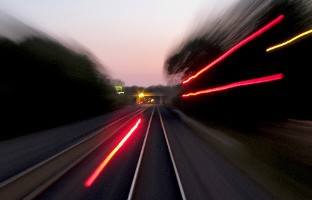The train I ride

The train I ride," Elvis sang, "is 16 coaches long." The train I ride, at least a dozen times a year, stretches four or five coaches long. It is Amtrak's Pere Marquette line between Chicago and Grand Rapids, Michigan. Travelers on the line are businesspeople, shoppers, baseball fans, family visitors, college students and—without fail—a goodly portion of Amish. Passengers nearly always fill the Pere Marquette, but, despite that, the line teeters annually in peril of elimination.
Americans are shortsighted about nothing so much as passenger trains. Sooner or later, and usually sooner, conversations about passenger trains and Amtrak in particular sputter with the dirty "s-word": subsidies. For some, that word alone is a conversation-stopper. It is taken as self-evident that government subsidies should be eliminated, and Amtrak is a favorite target.
Such conversations forget (or intentionally neglect) the reality that all American means of transportation depend on "subsidies." Eisenhower's construction of the interstate highway system was one of the most monumental—and expensive—public works projects in history. Concrete and asphalt roadways require much more frequent and more costly maintenance than other forms of transportation. Such "user-fees" as gasoline taxes are far from covering all these costs, and tax dollars make up the difference. Though it is comparatively inefficient and disproportionately polluting, America massively subsidizes automobile transportation.




